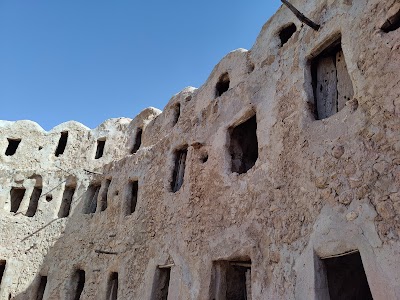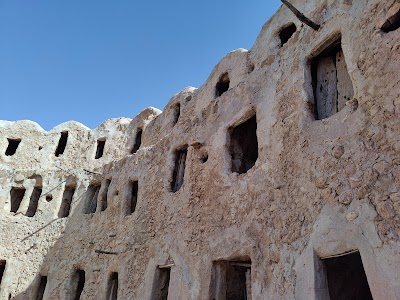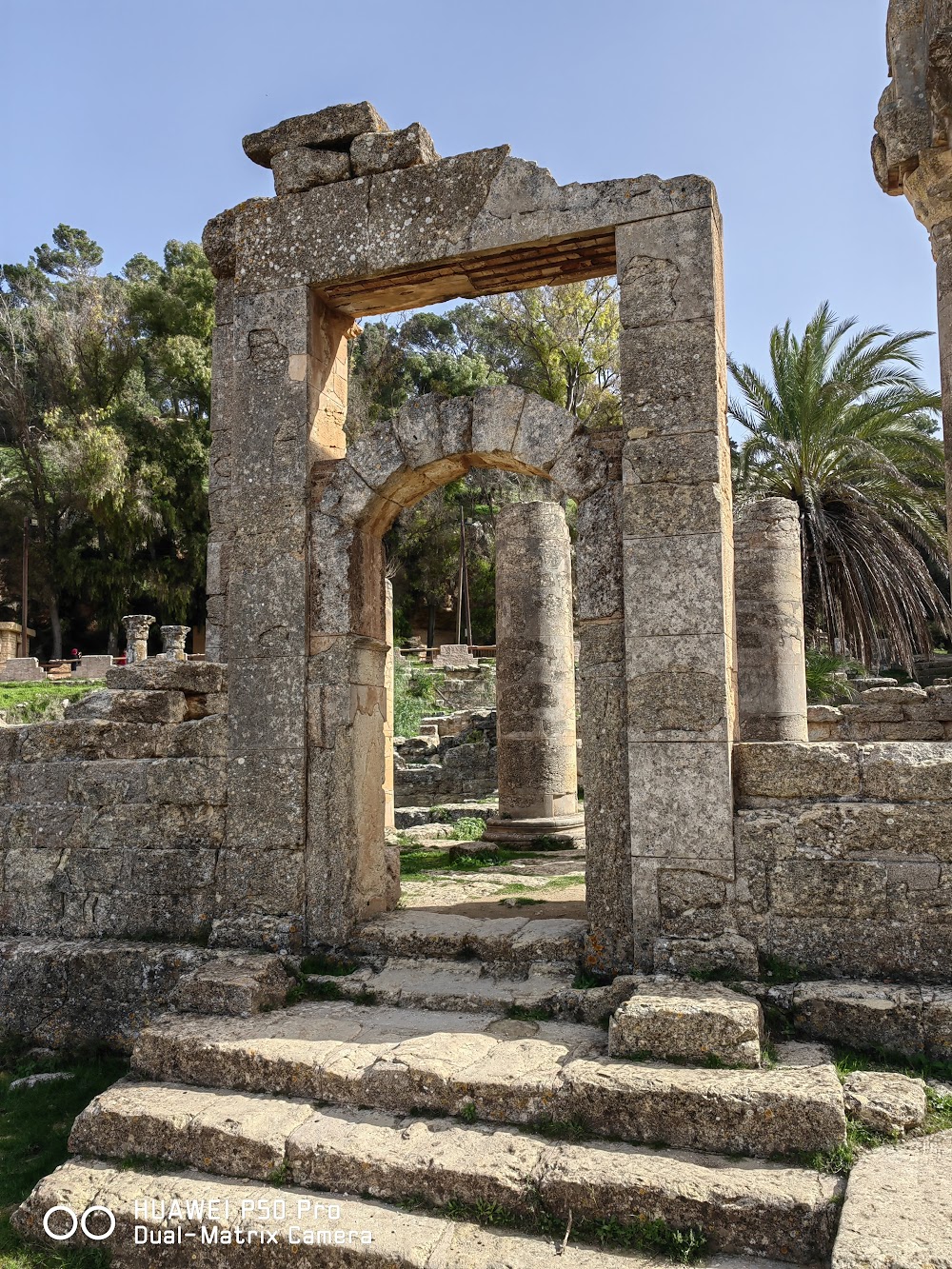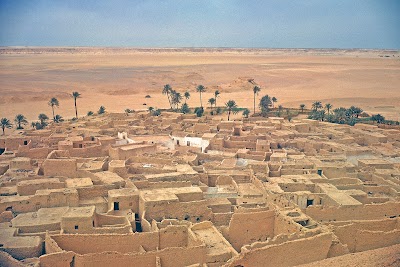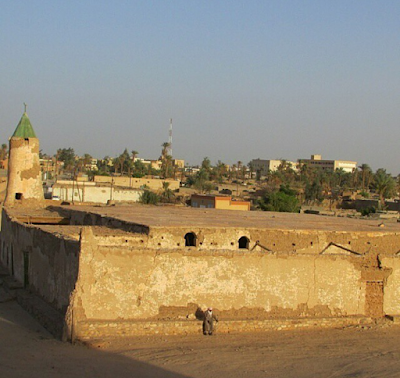Qasr Al-Haj (قصر الحاج)
Related Places
Overview
Discovering Qasr Al-Haj
Nestled in the Al Wahat District of northwestern Libya, Qasr Al-Haj is a stunning granary fortress that offers a captivating glimpse into the region's rich history and architectural heritage. This remarkable structure stands as a testament to the innovative spirit and collaboration of the tribal communities that once thrived in this part of North Africa.
Constructed in the 12th century during the reign of the Berber Almohad dynasty, Qasr Al-Haj was ingeniously designed as a secure storage facility for grain and essential agricultural produce. It served as a sanctuary for the community’s food supply, safeguarding it from the harsh elements and potential raiders. The fortress features a circular design with a central open-air courtyard, showcasing the sophistication and practicality of ancient Berber engineering.
Architecture and Design
The granary comprises approximately 114 storage rooms, built in concentric circles, with each space allocated to individual families or tribal members. These rooms, sealed with intricately carved wooden doors, reflect the skillful craftsmanship of the artisans of the time. The central courtyard not only functioned as a storage area but also served as a vibrant communal hub where people gathered to socialize and strengthen their bonds.
What sets Qasr Al-Haj apart for visitors is its exceptional state of preservation and its continued use well into the 20th century. The fortress remains an authentic representation of medieval Berber life, allowing tourists to step back in time and experience the communal resilience and artistry that permeate its walls.
Community and Organization
One of the most intriguing features of Qasr Al-Haj is the meticulous system used by the Berbers to allocate storage space. Each room was carefully numbered and organized to ensure equitable access for every family, highlighting the advanced levels of organization and the community's commitment to fairness. This thoughtful allocation reflects the deep-seated values of cooperation and mutual assistance that defined the lives of its ancient inhabitants.
The construction techniques used in Qasr Al-Haj are also noteworthy. Built with mud bricks and stone, the fortress's walls are designed to endure the harsh desert climate, providing excellent insulation against extreme temperatures. The ingenuity of the design is evident in how the fortress remains cool even during the scorching heat of the day, making it a refuge not only for grains but also for the people.
A Cultural Emblem
Beyond its practical uses, Qasr Al-Haj symbolizes the cultural spirit of the region. The granary highlights the significance of communal collaboration and the collective effort needed to ensure survival in a challenging environment. As you wander through its grounds, you can almost feel the interconnectedness of the daily activities that shaped the lives of its ancient inhabitants.
Today, Qasr Al-Haj attracts a growing number of adventurous travelers eager to explore Libya’s hidden historical gems. Its remote location offers an off-the-beaten-path experience, making it an ideal destination for those looking to venture beyond traditional tourist circuits. Visiting Qasr Al-Haj not only provides a deep dive into history but also allows you to appreciate the stunning desert scenery and tranquil ambiance of the surrounding landscape.
A Journey Through Time
Qasr Al-Haj serves as a beautiful reminder of the past, where history, architecture, and culture converge. This fortress encapsulates centuries of Berber ingenuity and connects us to the lives of those who once relied on it. Whether you’re passionate about ancient civilizations, a lover of unique architectural marvels, or simply a curious traveler, Qasr Al-Haj promises an enriching and unforgettable experience.
In summary, a visit to Qasr Al-Haj in the Al Wahat District offers an intriguing journey into Libya’s rich cultural and historical heritage. The granary’s remarkable preservation, alongside its fascinating history and architectural brilliance, makes it a compelling destination for anyone seeking to understand the depth and resilience of Berber society. Embrace the opportunity to explore this ancient treasure, and let its timeless charm and storied walls transport you back to a bygone era of communal harmony and resourcefulness.


